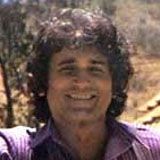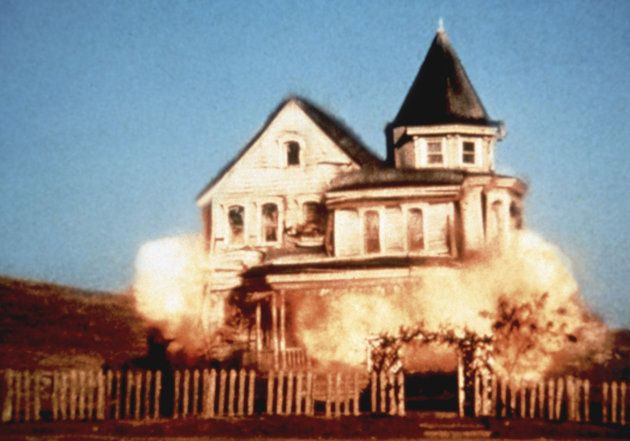TV URBAN LEGEND: Michael Landon had the sets for Little House on the Prairie destroyed so no other shows could re-use them, and there could be no reunions.
The Western has long had a significant presence on American television. It doesn't seem as though a single season passes without at least one Western on the air (AMC’s Hell on Wheels, for instance). However, by the time Little House on the Prairie debuted in 1974 (first with a popular TV movie in the spring that served as a pilot and then the series proper that fall), Westerns had fallen from their position of prominence, when shows like Gunsmoke and Bonanza were regular features in the Nielsen top 10. So it was somewhat surprising to see former Bonanza star Michael Landon launch a series about settlers in Walnut Grove, Minnesota (based on Laura Ingalls Wilder's bestselling children's books about her own life) become such a popular series.
Little House on the Prairie aired for nine seasons, with Landon starring in and producing the first eight before going fully behind the scenes for the final season, which saw a new family move into the "Little House" and Melissa Gilbert's Laura (now married) become the lead character. The show's ratings dipped in the final season and the show was canceled, but Landon was given a chance to wrap up the series with three television movies. Oddly enough, because of a scheduling fluke, the second film (a Christmas story) ended up airing a year after it was originally intended to run, in December 1984. So the third film, which worked as a series finale, wasn’t actually the last to air. The third film, "The Last Farewell," was very much a finale. In the episode, the citizens of Walnut Grove discover that a developer has bought up all of their land. They try to fight his claim but fail, and Laura inspires them to make a stand against the developer by actually blowing up all of the property in Walnut Grove.
So yes, the final episode of Little House on the Prairie ended with them destroying the town that fans had grown to love. Why the set was destroyed has been a matter of contention ever since. Here are two ways I've seen the story repeated over the years:
Did Michael Landon really burn down the Little House on the Prairie sets after the series wrapped so he’d never have to do a reunion movie/series?
and
The primary reason Michael Landon blew up the town was because he was mad they canceled the show and did not want anybody to use his set.
What is the truth?
It appears clear that Landon did like the idea of people not being able to use the Little House on the Prairie sets, but I think the answer to why he destroyed them is pretty clear; it’s something he was quite open about at the time.
First off, Landon understood why the show was canceled: The ratings were low. He knew tnine seasons was quite a run, and NBC even worked it out so he could wrap everything up with three TV movies. Landon had been working at the network for almost 25 years (between Bonanza and Little House on the Prairie), and his next series, Highway to Heaven, was also at NBC. In other words, Landon didn’t have a problem with NBC. As he told The New York Times, he never expected Little House to last that long.
More importantly, however, there was a pragmatic reason for the destruction of the town. Little House on the Prairie producer Kent McCrary explained it all to PrairieFans.com:
A lot has been said of late about why on Little House on the Prairie we blew up the town. I would like to set it straight so that everyone understands what actually happened. We have to go back to the start of the series when I made an arrangement to rent the property from Newhall Land and Development in Newhall, California.
The agreement that I had with them was that at the end of the series we would put the acreage back to its normal state. The reason for this was that Newhall Land and Development used the acreage as a feedlot for their cattle empire. Therefore, they were afraid if the buildings still stood one of the animals might get into them and get hurt or children in the area might get into the area and start to smoke, and with the high grass area that could be very dangerous. So it was in our initial agreement that we put the land back to its original state--thus filling in the areas where we had the stream and the town, and the stream by the little house, and taking the buildings down. That was the original reason.
Now, let’s talk about why we blew up the town. On a given day in the tenth season we had already done two two-hour shows and our commitment was to do a third. We had not decided on a script at this point and I was in the office working with Don Winter, our construction coordinator, about what it would take to dismantle all the buildings. While we were doing this and trying to run an estimate on the cost involved, Mike walked in the office and listened to what was going on and said, “How are you going to take the buildings down?” And I said, “We will probably bring in a large size crane similar to what you see on home makeover and knock the buildings apart, pick up the debris, and cart it away.” He said, “Let me think about that for a minute.” He went into the office and Don and I continued working and finished what we were doing.
About an hour and a half later Mike came back into my office and said, “What if we blow up the town? That would get the buildings all in pieces and you still can bring in your equipment to pick up the debris and cart it away.” And I said, “That’s fine.” He replied, “I will write a show that is where we will blow up all the buildings. I will not blow up the little house nor the church, but my thinking is to blow up all the other buildings.”
(NOTE: McCrary refers to the series of TV films as the show's "tenth season," just in case that was confusing)
Landon told that same story to The New York Times in 1984, and also noted:
I think it makes for a good strong pioneer ending. It was also a nice catharsis for the cast and crew. There were lots of tears when we finally blew up the town. The actors had all become very attached to their own buildings, so it was very emotional.
Actor John Ivar, who played the head of the family that moved into the "Little House,” took home the actual set for that house, rescuing it from destruction. A replica was put up in its place, but it was destroyed in a fire in 2003.
But yes, it’s true that Landon also found it nice to not have to see other TV shows or commercials using his old Little House sets. I don't think there‘s any indication that was the driving force for the destruction of the set, but it is fair enough to mention it. TV Land produced a special in which it was suggested that was primary motivation; it was that special that compelled McCrary to come forward. Because what he says now fits exactly what was said 30 years ago, I'm inclined to believe his take on the matter.
So I'm calling the legend as ...
STATUS: False (even if it is sort of technically true)
Thanks to Kent McCrary and PrairieFans.com for the information!
Feel free (heck, I implore you!) to write in with your suggestions for future installments! My e-mail address is bcronin@legendsrevealed.com.
Be sure to check out my Entertainment Urban Legends Revealed for more urban legends about the worlds of TV, Movies and Music!


